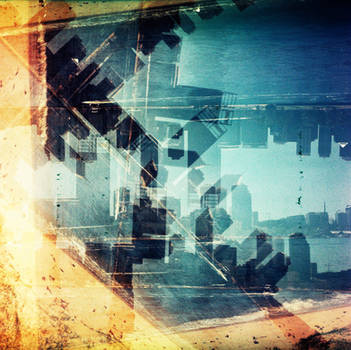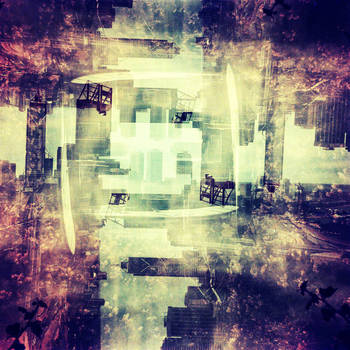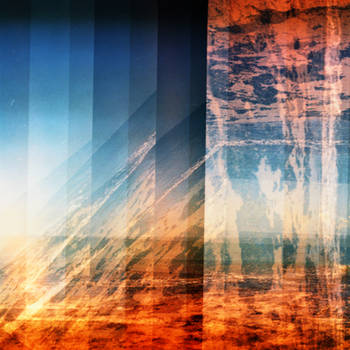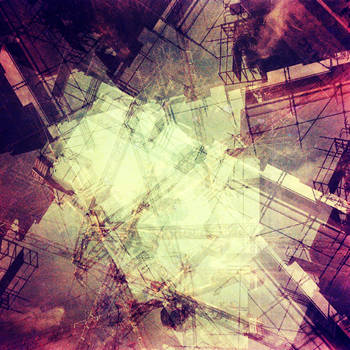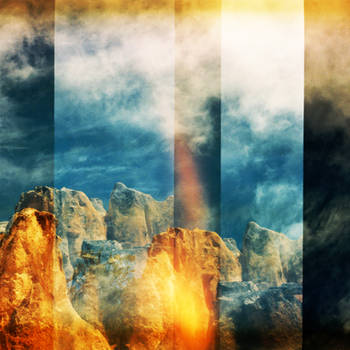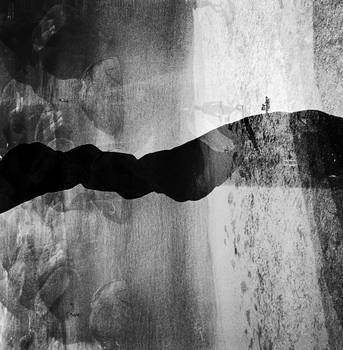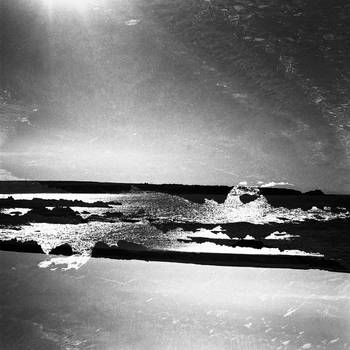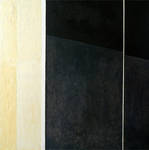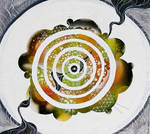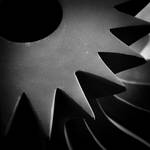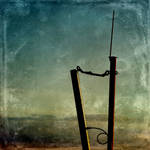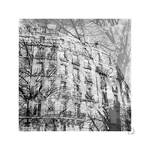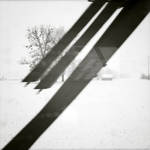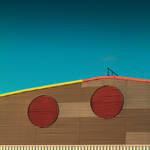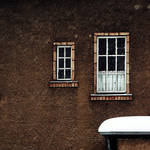> Please introduce yourself, in your own words. What are your interests?
Hi, my name’s Matthew Davidson - I go by the moniker Megalithicmatt because I like visiting ancient sites such as stone circles and standing stones. I’m a geochemist, not an artist or designer by trade, so my photographs are taken purely as a hobby, though I have considered becoming a working photographer in the past. Aside from history and archaeology, I enjoy hiking, rock climbing and anything that gets me out into the countryside.
> Where did you begin with artistic endeavours? How did you come across Abstraction or Surrealism?
My dad was an art teacher and his house is filled with curios, collages and little paintings: he used to have a massive surrealist Man Ray poster by the front door. I also visited lots of galleries and museums when I was young, so I suppose my interest in art developed gradually over the years. I enjoyed drawing classes at school but there was little room in them for pure imagination. Thankfully, my photography and darkroom teacher was far more lenient and my interest in that side of things grew rapidly. I joined dA then Flickr about seven years ago and became exposed to far more photographs than ever before. Abstract and surreal works (i.e. the weird ones) caught my interest pretty quickly and I gave more consideration to repeating patterns and interesting gatherings of shapes. I also experimented with intentional camera movement for a while before wanting to take multiple exposures. I found these to be one of the easiest (and fun!) ways to completely obscure the original subject.
> How would you explain the concept of Abstraction or Surrealism to someone with no experience with the genre?
They both hide the main subject in different ways, but the ways in which they’re hidden in turn form the main subject. They make you question the nature of the image: for instance, abstract ones might reduce subject matter to pure shape while surreal ones might take subjects out of their normal contexts and put them in unusual situations.
> What inspires you to use Abstraction or Surrealism in your work?
Looking around this room while typing gives lots of ideas - the shadows on the door panels, the light shining through the Venetian blinds, etcetera. – these might give some interesting results if photographed up close. Personally, more fascinating subjects are found outside. Perth is full of massive glass-fronted skyscrapers and trying to fit the overwhelming presence of them into one frame can be challenge enough. There’s nothing like this back home: Scotland works in a different way with its hilly landscapes and stormy weather – I have plenty of ideas for surreal photos there but I’d need some volunteers to help make them! Unfortunately, most of my friends and family despise having their photographs taken. Aside from landforms and architectural monstrosities, natural abstract forms (for example in leaf veins, crystal formations and chemical reactions) can also be inspiring.
> What do you want to express with your artwork? What is the idea you're trying to put across?
There’s not any real agenda – I photograph lots of different things and, though an abstract mindset permeates much of the output, I’m not going out of my way to express anything in particular. I suppose I like patterns and creating new ways of looking at them.
> What are your 'tools of the trade'? How do you create your art?
Mainly cameras! I prefer using film because I like using older equipment and some can take unlimited multiple exposures. My DSLR can only take three per photo. The medium format camera of choice is the Zeiss Ikon Nettar, if only because it was one of the few not falling to pieces before I left for Perth. The problem with taking, say, 20 exposures on one picture is the potential for massive overexposure. Most of the multiple exposures are taken at maximum speed at f16 or f22, ~ISO 100. Little scan post-processing is needed below 8 exposures – just slight contrast boosts or a bit of curve adjustment. The more complex ones usually need levels adjustment and burning too. When I eventually get my own place (without flatmates) I plan to build a proper darkroom to do these procedures manually – plus I’ll be able to make photograms and all sorts of things! I also keep a sketchpad for any ideas that spring to mind – mine is mostly filled with the unrealised surrealist compositions.
> Do you think the quality of a piece depends more upon technical perfection, or the message contained therein?
Technical, definitely, though it may be hypocritical of me to say so, given that I don’t have quite the patience I would like to have when taking pictures! I find attention to detail draws much more attention from me. I think that technical perfection comes down to arrangements of objects, cropping, and absence of distractions: therefore you can still have ‘errors’ as long as they mesh with the overall composition, and main subjects can be blurry or out of focus as long as they’re aesthetically harmonising. Frankly, I don’t approach photographs from an emotional point of view. I find it difficult to read emotion in artwork and I’m certainly not creating anything with the intention of sending a message. When I’m making pictures I’m doing so out of technical curiosity. So, personally, I’m not on the lookout for meaning in other people’s work, but that doesn’t stop me from appreciating beautiful art.
> Who are your favourite visual artists, and why?
I really like Ben Nicholson’s abstract paintings of grids and squares. I first saw them at the Pier Arts Centre in Stromness, Orkney, in 2008. They made me feel calm and relaxed… I’m not sure if I can go into any great technical detail for why this was so but suffice to say they were refreshing. The gallery also holds many small sculptures by Barbara Hepworth which complement Nicholson’s work very well. Part of the attraction of the Pier Arts Centre was that I could nip in past most days on the way home that summer (I was working on a geological mapping project). I drew some parallels between the paintings and the straight lines of mudstones and intersecting faults in the cliffs. Given that I’d spent over 8 hours staring at them in intimate detail every day, perhaps this wasn’t surprising. I’m also very fond of the scenic paintings by Sara Gallie, such as this one. I have one of her pictures at home – an airy vista of tiny twisty trees in a massive field. It reminds me of lonely places. Being in Australia has also exposed me to lots of brilliant aboriginal paintings which are very abstracted and curious in form.
> Which dA Groups would you recommend to someone looking to get involved with abstract and surreal art?
> What advice would you give to an absolute beginner in the genre?
Keep a camera or sketchpad on you at all times. Look for patterns and juxtapositions in ordinary things (e.g. cracks in the pavement, painted lines on the road) and find interesting angles for them. Photograph everything that catches your eye and keep experimenting.
> Any final words on abstract and surreal art?
They have near unlimited potential for new developments – anything at all can become part of an abstract or surrealist composition. The only limit is the mindset behind it.
> In conclusion, pick nine works from your Favourites that you particularly enjoy.


